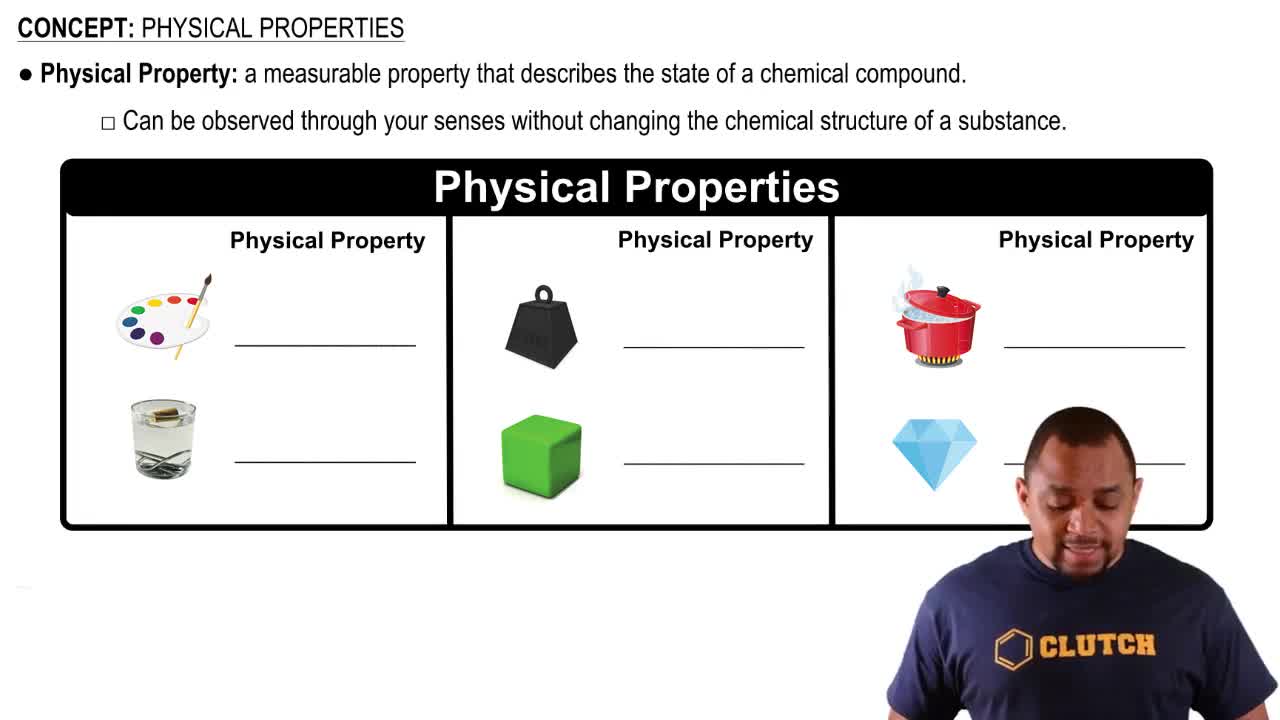The standard enthalpies of formation of gaseous propyne (C3H4), propylene (C3H6), and propane (C3H8) are +185.4, +20.4, and -103.8 kJ/mol, respectively. (c) Which is the most efficient fuel in terms of heat evolved per unit mass?
The automobile fuel called E85 consists of 85% ethanol and 15% gasoline. E85 can be used in the so-called flex-fuel vehicles (FFVs), which can use gasoline, ethanol, or a mix as fuels. Assume that gasoline consists of a mixture of octanes (different isomers of C8H18), that the average heat of combustion of C8H18 is 5400 kJ/mol, and that gasoline has an average density of 0.70 g/mL. The density of ethanol is 0.79 g/mL. (b) Assume that the density and heat of combustion of E85 can be obtained by using 85% of the values for ethanol and 15% of the values for gasoline. How much energy could be released by the combustion of 1.0 L of E85? (c) How many liters of E85 would be needed to provide the same energy as 40 L of gasoline?
 Verified step by step guidance
Verified step by step guidanceKey Concepts
Heat of Combustion

Density and Volume Relationships

Mixture Properties

It is interesting to compare the 'fuel value' of a hydrocarbon in a hypothetical world where oxygen is not the combustion agent. The enthalpy of formation of CF4(g) is -679.9 kJ/mol. Which of the following two reactions is the more exothermic?
CH4(g) + 2 O2(g) → CO2(g) + 2 H2O(g)
CH4(g) + 4 F2(g) → CF4(g) + 4 HF(g)
At the end of 2012, global population was about 7.0 billion people. What mass of glucose in kg would be needed to provide 1500 Cal/person/day of nourishment to the global population for one year? Assume that glucose is metabolized entirely to CO2(𝑔) and H2O(𝑙) according to the following thermochemical equation: C6H12O6(s) + 6 O2(𝑔) → 6 CO2(𝑔) + 6 H2O(𝑙) ΔH° = -2803 kJ
The automobile fuel called E85 consists of 85% ethanol and 15% gasoline. E85 can be used in the so-called flex-fuel vehicles (FFVs), which can use gasoline, ethanol, or a mix as fuels. Assume that gasoline consists of a mixture of octanes (different isomers of C8H18), that the average heat of combustion of C8H18(l) is 5400 kJ/mol, and that gasoline has an average density of 0.70 g/mL. The density of ethanol is 0.79 g/mL. (a) By using the information given as well as data in Appendix C, compare the energy produced by combustion of 1.0 L of gasoline and of 1.0 L of ethanol.
The air bags that provide protection in automobiles in the event of an accident expand because of a rapid chemical reaction. From the viewpoint of the chemical reactants as the system, what do you expect for the signs of q and w in this process?
Consider a system consisting of the following apparatus, in which gas is confined in one flask and there is a vacuum in the other flask. The flasks are separated by a valve. Assume that the flasks are perfectly insulated and will not allow the flow of heat into or out of the flasks to the surroundings. When the valve is opened, gas flows from the filled flask to the evacuated one. (a) Is work performed during the expansion of the gas? (b) Why or why not?
